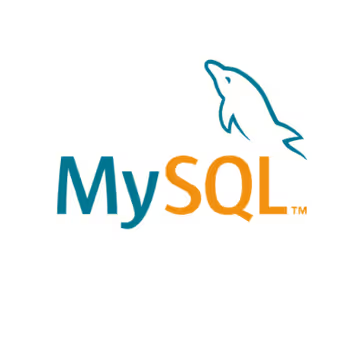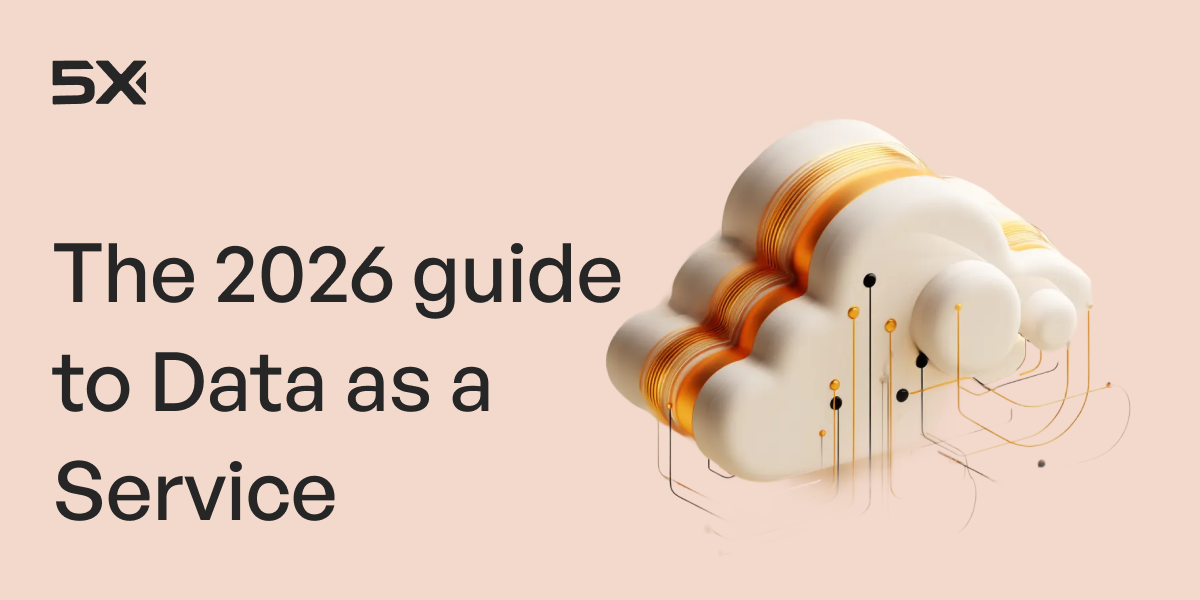Table of Contents
TL; DR
Choosing the right data modeling tool boils down to ease of use, scalability, integration, and cost. Here are 6 top picks for 2025:
- 5X – Enterprise-grade, AI-powered modeling & data readiness platform (best all-in-one).
- dbt – Scalable SQL-based transformations with strong version control.
- Coalesce – No-code/visual data modeling, one of the best data modeling tools for snowflake
- Matillion – Cloud-native ETL with a user-friendly drag-and-drop interface.
- erwin Data Modeler – Robust enterprise modeling with governance capabilities.
- MySQL Workbench – Open-source go-to for MySQL database design & management.
Bottom line: If you want simplicity + enterprise-grade power, 5X is the standout. It consolidates data ingestion, modeling, orchestration, and BI reducing infra spend by up to 30% while boosting team productivity.
Data modeling is the art and science of transforming raw data into actionable insights. But with countless tools flooding the market for various use cases, choosing the right one can be overwhelming.
Our team has waded through countless Free data modeling tools, each promising to revolutionize your workflow. But let's face it, not all tools are created equal. Some are flashy but lack substance, while others are powerful but overly complex.
In this article, I'll cut through the noise and provide a hand-picked list of 6 Top data modeling tools that have proven their worth. For starters, let’s touch base on what no-code data modeling tools are and their types.
What are data modeling tools?
Data modeling tools help you design and structure how data is stored and organized in databases. They allow you to create a blueprint or map of your data, showing how different data elements relate to each other. This makes it easier to manage, query, and analyze data. These tools typically provide visual interfaces where you can draw diagrams to represent tables, fields, and relationships so your data is organized logically and consistently.
Modern AI data modeling tools are revolutionizing this process by automating schema detection and suggesting optimizations based on data patterns, significantly reducing manual effort while improving model accuracy.
Types of data modeling tools
Here are the main types of Api data modeling tools:
- Conceptual: High-level tools for mapping out what data represents, focusing on the big picture.
- Logical: Tools that add detail to the conceptual model, showing specific data attributes and relationships.
- Physical: Tools for designing how data is stored in a database, including table structures and indexes.
- Enterprise: Tools for modeling data across an organization, ensuring consistency between systems.
- Metadata: Tools for managing data about your data, ensuring clear documentation and understanding.
From budget-friendly open source data modeling tools to comprehensive enterprise solutions, the market offers options for every need and expertise level.
6 best data modeling tools in 2025
- 5X - Best for enterprise-grade data modeling and core data readiness
- dbt - Best for scalable SQL-based transformations
- Coalesce - Best for visual, no-code data modeling
- Matillion - Best for cloud-native ETL with a visual interface
- erwin Data Modeler - Best for advanced data modeling
- MySQL Workbench - Best for MySQL database management and design
Let's explore each of these top flexible data modeling software options in detail.
1. 5X

5X Modeling is one of the best AI data modeling tools you can find from the lot. 5X is a full-stack data readiness platform for companies that want to leverage data without complexity. It’s incredibly easy to use & get started with.
With 5X Modeling, you can easily build, test, deploy, run, and iterate data pipelines at extraordinary velocity. Plus, you don’t have to worry about deployment, management, and scaling. 5X handles it end-to-end freeing you up to action data instead of worrying about the underlying tools & integrations.
Key features
- Delta Lake and Spark integration: Seamlessly works with Delta Lake and Apache Spark for advanced data processing and storage.
- Python notebooks: Offers interactive notebooks for Python code in data wrangling, transformation, and model building.
- Enterprise modeling: Supports dbt for advanced, one of the best data modeling tools for enterprise databases
- SQL and Python flexibility: Provides support for SQL and Python notebooks for flexible data transformation.
- Native notebook support: Enhances analyst productivity with native notebook support.
- Advanced error handling: Simple YAML-based error handling approach with abilities to define at a project or model level.
Platform benefits
- Quick setup: End-to-end, integrated data platform that gets you up & running in hours
- Built for business ROI: 5X maximizes ROI by boosting data team productivity & reducing infra spends by 30%
- Easy to use & scale: A single interface to build & monitor data pipelines. No hassle of switching vendors.
- Maintenance-free: 5X manages the data platform, removing the hassle of maintaining the data infrastructure
Who is 5X for
5X is for companies looking for a comprehensive, easy-to-use data platform that consolidates all data functions and reduces costs, while simplifying management and integration. To sum it up, it’s for companies that want to leverage data without complexity.
G2 rating
4.8/5
2. dbt

dbt (data build tool) is a visual data modeling tool that helps you transform raw data into a format that’s ready for analysis. It allows you to write SQL queries to clean, join, and transform data, and then automatically runs these transformations when you need them. dbt is designed to work with your existing data warehouse, making it easier to manage and maintain complex data transformations.
Key features
- SQL-based: dbt lets you write transformations using simple SQL, making it easy for data engineers to pick up and use without learning a new language.
- Version control: It integrates with Git, so you can version control your data models just like your code.
- Dependency management: dbt automatically handles dependencies between different data transformations, ensuring that they run in the correct order.
- Testing: You can write tests to validate your data models, helping catch errors early.
- Documentation: dbt generates documentation for your data models, making it easier to understand and share with your team.
Pros
- Simple syntax: The templating engine makes it easy to define and manage data models and their relationships.
- Clean data modeling: Supports version-controlled data modeling, reducing the need for third-party tools like Looker.
- Scalability: Handles large-scale data models effectively.
- Flexible for SQL developers: Suitable for SQL developers of varying experience levels.
Cons
- Requires technical skills: Mastering dbt's data modeling capabilities requires significant technical expertise.
- Complex to adopt: Integrating dbt into an existing architecture can be challenging.
- Dependent on input quality: The effectiveness of data models depends heavily on the quality of input from experienced analytics engineers.
Who is dbt for?
dbt is especially useful for teams that are already comfortable with SQL and want to manage data transformations in a scalable and version-controlled way.
G2 rating
4.8/5
3. Coalesce
.avif)
Coalesce is a data transformation and modeling tool designed to simplify and accelerate the process of building and maintaining data pipelines. It provides a visual interface for designing, managing, and executing data transformations to streamline complex data workflows. Coalesce is particularly focused on improving the efficiency of data transformations in enterprise environments.
Key features
- Visual data modeling: Coalesce offers a drag-and-drop interface for building data models, making it easier to visualize and manage complex data transformations.
- Metadata-driven development: Focus on defining data structures and transformations through metadata.
- No-code/low-code approach: Minimize the need for writing extensive SQL code, speeding up development.
- Data lineage: The tool provides clear visibility into data lineage, helping users track how data moves and transforms across the pipeline.
- Snowflake integration: Deep integration with Snowflake, leveraging its features and performance capabilities.
Pros
- Comprehensive data validation: Ensures high data quality and thorough testing within models.
- Data lineage: Provides visibility into data flow, helping users track and understand data transformations.
- Intuitive interface: Easy to use with a visual approach that speeds up prototyping and reduces time to market.
- Snowflake optimization: Tailored for Snowflake, optimizing SQL to maximize performance in Snowflake transformations.
- IDE-based development: Supports integrated development with a focus on ease of use.
Cons
- Drag-and-drop focus: Emphasizes drag-and-drop functionality over scripting, which might not suit all users.
- UI-based experience: Primarily UI-driven, which can limit flexibility for those preferring more control via scripting.
- Limited customization: Offers fewer customization options compared to more code-centric tools.
- Young product: As a newer tool, it may have minor UI flaws or bugs.
- Complexity for some users: Despite the user-friendly interface, some users may find it complex without sufficient data management expertise.
Who is Coalesce for?
Coalesce is designed for data engineers and data teams working in enterprise environments where managing large, complex data pipelines is a daily challenge. It’s particularly beneficial for teams looking to streamline and automate their data transformation processes while maintaining control and visibility over their data flows.
G2 rating
G2 rating is not available. It’s rated 4.5/5 on Gartner.
4. Matillion

Matillion is an ETL (Extract, Transform, Load) tool that simplifies the process of moving and transforming data within cloud data warehouses like Snowflake, BigQuery, and Redshift. It provides a user-friendly interface for designing data pipelines, enabling data engineers to extract data from various sources, transform it according to business rules, and load it into a target database.
Key features
- Cloud-native: Matillion is built specifically for cloud environments, making it highly optimized for cloud data warehouses.
- Visual interface: Offers a drag-and-drop interface for building ETL pipelines, which helps streamline the creation and management of data workflows.
- Wide integration: Supports a broad range of data sources, allowing seamless integration with cloud platforms, databases, and third-party applications.
- ETL/ELT capabilities: Supports both Extract, Transform, Load (ETL) and Extract, Load, Transform (ELT) methodologies.
- Job orchestration: Matillion allows you to schedule and manage complex data workflows, ensuring that your ETL processes run smoothly and on time.
- Error handling and logging: Robust error handling and logging mechanisms for troubleshooting and monitoring.
Pros
- User-friendly interface: Makes it easy for beginners to learn and use, with a focus on graphical workflows.
- Low code/no code functionality: Allows for ease of use while providing powerful data transformation capabilities.
- Numerous connectors: Supports a wide range of data sources, making integration straightforward.
- Integration with Snowflake: Optimized for use with Snowflake, enhancing performance and compatibility.
- Visual ETL flows: Provides clear visibility into processes, making it easier to manage and understand data pipelines.
Cons
- Git integration limitations: Git integration is not robust, making collaboration and version control challenging.
- Limited customization: The pre-built components offer limited flexibility for advanced users.
- High cost: The pricing model can be expensive, especially as the number of users or scale increases.
- Complexity in error logging: The error logs can be vague, making troubleshooting difficult.
Who is Matillion for?
Matillion is ideal for data engineers and teams that need to manage data pipelines in cloud environments. It’s particularly well-suited for organizations already using cloud data warehouses and looking for a tool that simplifies ETL processes through a user-friendly, visual interface.
G2 rating
4.4/5
5. erwin Data Modeler

erwin Data Modeler is a comprehensive data modeling tool designed to help organizations design, visualize, and manage their data structures. It supports various types of data models, including conceptual, logical, and physical models, and is used for creating and maintaining data schemas, databases, and data warehouses.
As one of the leading enterprise data modeling tools, erwin provides robust features for complex organizational needs.
Key features
- Visual modeling: Offers a visual interface for designing and documenting data models, including entities, relationships, and attributes.
- Model synchronization: Enables synchronization between different data models and databases, ensuring consistency and accuracy.
- Reverse engineering: Can reverse engineer existing databases to generate data models, making it easier to understand and work with legacy systems.
- Forward engineering: Converts data models into SQL scripts to create or modify databases, streamlining the deployment process.
- Collaboration tools: Provides features for team collaboration, including version control and model sharing, to support collaborative design and review processes.
- Data governance: Includes capabilities for managing data lineage, data quality, and metadata, supporting data governance efforts.
Pros
- Customization and integration: Highly customizable with strong integration capabilities across various data sources.
- Flexibility and advanced features: Provides robust support for lineage and impact analysis, enhancing data management.
- Visualization: Offers detailed visual representation of data models, improving clarity and collaboration.
- Stability and support: Generally stable with prompt and effective support from the vendor.
- Versioning: Effective version control and management of data models.
Cons
- Outdated interface: The UI is considered outdated and less user-friendly, impacting overall efficiency.
- Performance issues: Slow performance with occasional 'Not Responding' errors during model saving.
- Documentation and usability: Incomplete documentation and challenges with using third-party tools for data manipulation.
- Licensing model: The licensing model is inflexible, posing challenges for scaling usage.
- Integration and update delays: Slow to integrate with new technologies and databases, requiring manual adjustments.
Who is erwin Data Modeler for?
erwin Data Modeler is suited for data architects, database administrators, and data engineers who need a powerful and comprehensive tool for designing and managing data structures. It is particularly useful for organizations with complex data environments that require detailed modeling and strong governance capabilities.
G2 rating
4.3/5
6. MySQL Workbench

MySQL Workbench is a visual tool designed to help database administrators, developers, and data architects work with MySQL databases. It provides a range of functionalities, including database design, SQL development, administration, and data modeling. It’s a go-to tool for those managing MySQL databases, offering both visual and script-based interfaces.
Key features
- Visual database design: MySQL Workbench allows you to design and model databases using an intuitive visual interface. You can create and modify tables, indexes, relationships, and more without writing SQL code.
- SQL editor: The tool includes a robust SQL editor with syntax highlighting, auto-completion, and error detection, making it easier to write and debug SQL queries.
- Database administration: MySQL Workbench offers tools for managing user accounts, performing database backups, and monitoring server performance, all within a single interface.
- Data modeling: You can create and manage data models, generating SQL scripts for forward engineering or reverse engineering existing databases.
- Migration wizard: It provides a migration wizard to help migrate data from other databases to MySQL, simplifying the transition process.
Pros
- User-friendly interface: The GUI is intuitive, making database design and management easier.
- Powerful design tools: Provides visual tools for designing and modeling databases, which streamlines schema creation.
- Versatile functionality: Supports views, stored procedures, and triggers.
- Efficient data management: Facilitates easy connection to multiple data sources and offers quick performance for many tasks.
- Good query editor: Features syntax highlighting and code completion to aid in writing and debugging SQL queries.
Cons
- Resource-intensive: Can consume a lot of RAM, affecting system performance.
- Slow with large data: Performance can lag with large datasets or complex queries.
- Poor CSV handling: Loading normal-sized CSV files can be time-consuming.
- Limited documentation: Official documentation can lack detail, and community support may be less active.
Who is MySQL Workbench for?
MySQL Workbench is designed for database administrators, developers, and data architects who work primarily with MySQL databases. It’s especially useful for those who prefer an open-source data modeling tools with a visual interface for designing databases and managing queries but still need powerful scripting and administration tools.
G2 rating
4.2/5
What to consider when choosing a data modeling tool?
When choosing a data modeling software, consider the following:
- Choose an easy-to-use tool: Pick a tool that’s intuitive and simple to navigate. For example, if you’re a data engineer who needs to quickly build and adjust models, a tool with a user-friendly interface like dbt or Erwin Data Modeler can save time and reduce errors.
- Ensure compatibility: Verify that the tool integrates well with your existing database systems and supports the data formats you use. For instance, if you use SQL databases, ensure the tool works with SQL Server, MySQL, or PostgreSQL.
- Look for essential features: Find a tool that offers visual modeling and handles complex data types. Tools like Microsoft Visio or IBM InfoSphere Data Architect are useful for creating visual data models and managing complex relationships between tables.
- Check performance capabilities: Select a tool that can efficiently manage large datasets without slowing down. If you work with big data, tools like Apache Spark or Snowflake data modeling tools might be necessary for handling high volumes of data efficiently.
- Evaluate collaboration options: Opt for a tool that supports team collaboration and version control. For example, a tool like Lucidchart allows multiple team members to work on the same model simultaneously, making it easier to collaborate on data projects.
- Assess support and documentation: Choose a tool with strong documentation and customer support. A tool with comprehensive help resources, like Oracle SQL Developer, can assist with troubleshooting and learning the tool’s features.
- Consider the cost: Review the pricing structure to ensure it fits within your budget. Some tools offer free versions or open-source options, such as MySQL Workbench, while others might require a subscription or one-time purchase.
- Test integration capabilities: Make sure the tool integrates seamlessly with your data management and analysis systems. For example, if you use BI tools like Tableau or Power BI, choose a modeling tool that can easily connect with these platforms to ensure smooth data flow and analysis.
Final word
Choosing the right data modeling tool is crucial for project success. The ideal tool should be easy to use, scalable, and fit within your budget.
Key considerations include:
- Ease of Use: A straightforward interface enhances productivity.
- Scalability: The tool should efficiently handle varying data sizes.
- Integration: Ensure compatibility with your current data stack.
- Features: Look for essential features like data quality checks and version control.
- Cost: Choose a tool that offers good value for your budget.
5X stands out as a comprehensive solution that addresses these challenges head-on. It integrates data ingestion, modeling, orchestration, and BI. It simplifies data management, reduces costs by up to 30%, and provides full support, making it ideal for efficient, data-driven decision-making.
You may also like:
Top 11 Data Transformation Tools in 2024 [Expert-Reviewed]
10 Best Data Management Tools in 2024 [Expert Picks]
Top 10 Data Integration Tools in 2024 [Break Data Silos]
Which database software offers the best data model flexibility?

Is traditional data modeling dead?

What is the difference between Logical Data Model & Semantic Data model?

What does a data architect do?

Building a data platform doesn’t have to be hectic. Spending over four months and 20% dev time just to set up your data platform is ridiculous. Make 5X your data partner with faster setups, lower upfront costs, and 0% dev time. Let your data engineering team focus on actioning insights, not building infrastructure ;)
Book a free consultationHere are some next steps you can take:
- Want to see it in action? Request a free demo.
- Want more guidance on using Preset via 5X? Explore our Help Docs.
- Ready to consolidate your data pipeline? Chat with us now.

How retail leaders unlock hidden profits and 10% margins
Retailers are sitting on untapped profit opportunities—through pricing, inventory, and procurement. Find out how to uncover these hidden gains in our free webinar.
Save your spot








%201.svg)


.png)






